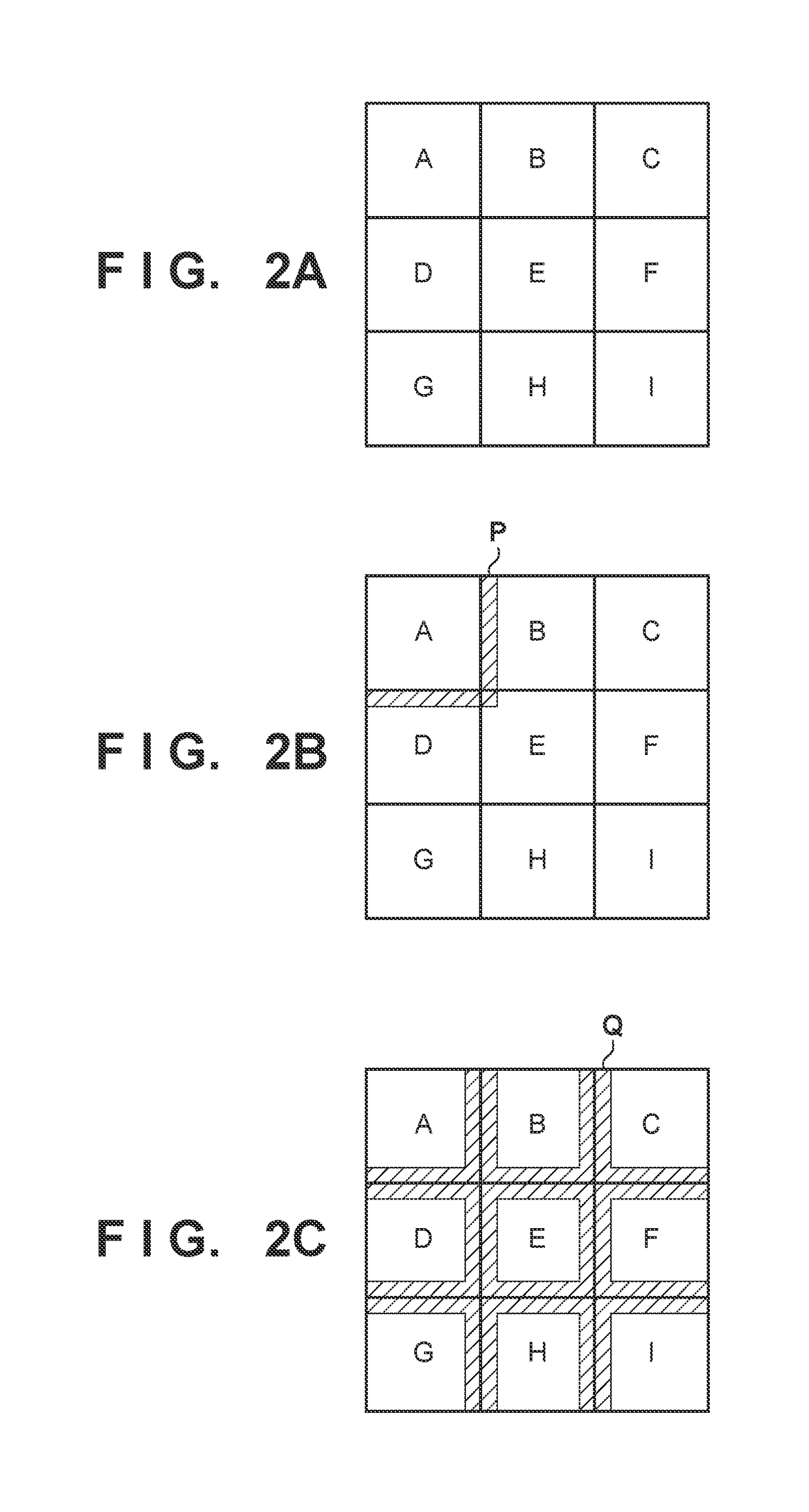Image encoding apparatus and method of controlling same
a technology of image data and encoding apparatus, applied in electrical apparatus, digital video signal modification, pictoral communication, etc., can solve the problems of image degradation, loss of continuity of tiles in images, and noise at tile boundaries,
- Summary
- Abstract
- Description
- Claims
- Application Information
AI Technical Summary
Benefits of technology
Problems solved by technology
Method used
Image
Examples
first embodiment
[0025]Explanation is given of an example in which the first embodiment is applied to an image capturing apparatus such as a digital camera. FIG. 1 is a block configuration diagram of an image encoding unit 100 in an image capturing apparatus.
[0026]As shown in the figure, the image encoding unit 100 has a frame memory 101, a data input controller 102, a wavelet transform unit 103, a quantizing unit 104, an entropy encoding unit 105, and a setting unit 106. Note that, in the first embodiment, although explanation is given of an example of using JPEG 2000 as an example of an encoding scheme, the encoding scheme is not particularly questioned. Explanation is given below of a processing procedure for encoding processing based on the configuration of FIG. 1. Here, the setting unit 106 decides, in accordance with an instruction from an operation unit (not shown), how many tiles to divide image data that is an encoding target into, and furthermore how many times to perform a wavelet transfo...
second embodiment
[0109]FIG. 8 depicts a block configuration diagram of an image encoding unit 800 in a second embodiment. The image encoding unit 800 in the second embodiment differs in a point of providing a setting unit 801 instead of the setting unit 106 of FIG. 1 in the first embodiment, and a point of having an encoded data amount adjustment unit 802. In addition, operation of the data input controller 102 and the wavelet transform unit 103 also differs from that for FIG. 1. Note that, in addition to the function of the setting unit 106 of FIG. 1, the setting unit 801 in the second embodiment inputs a compression rate in accordance with an instruction from an operation unit (not shown), and in accordance with this controls the data input controller 102 and the encoded data amount adjustment unit 802. FIG. 9 is a flowchart illustrating a processing procedure in the second embodiment. Below, the processing of each configuration element of FIG. 8 is explained in accordance with the flowchart of FI...
PUM
 Login to View More
Login to View More Abstract
Description
Claims
Application Information
 Login to View More
Login to View More - R&D
- Intellectual Property
- Life Sciences
- Materials
- Tech Scout
- Unparalleled Data Quality
- Higher Quality Content
- 60% Fewer Hallucinations
Browse by: Latest US Patents, China's latest patents, Technical Efficacy Thesaurus, Application Domain, Technology Topic, Popular Technical Reports.
© 2025 PatSnap. All rights reserved.Legal|Privacy policy|Modern Slavery Act Transparency Statement|Sitemap|About US| Contact US: help@patsnap.com



